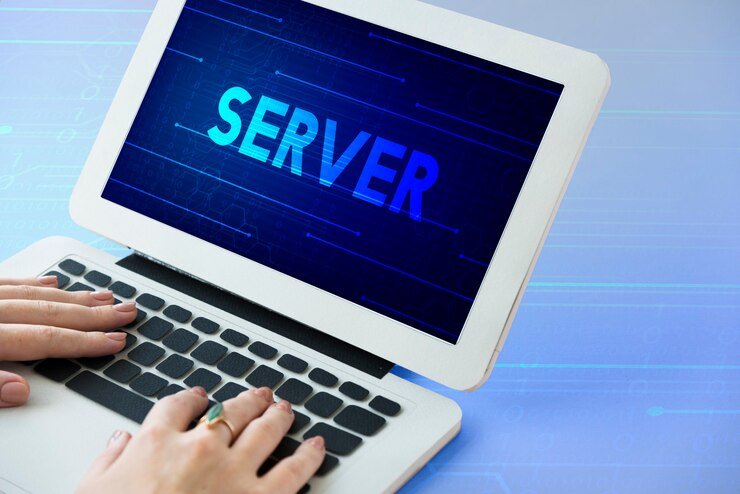
Introduction to Local Servers and 127. 0. 0. 1:5244
Imagine having a space on your computer where you can test, develop, and experiment without any restrictions. That’s the beauty of setting up a local server. It allows developers to run applications directly from their own machine, with 127. 0. 0. 1:5244 acting as your personal gateway to this digital playground.
This little IP address may seem unassuming, but it opens doors to incredible opportunities for web development and testing environments right at your fingertips. Whether you’re building websites or honing your coding skills, mastering local servers is essential for anyone in tech.
Join us on this journey as we demystify the process of setting up a local server at 127.0.0.1:5244! With just a few tools and steps, you’ll be ready to dive into hands-on projects that bring your ideas to life without ever leaving home—or relying on an internet connection!
Understanding the IP Address 127.0.0. 1:5244
The IP address 127.0.0.1 is often referred to as the loopback address. It serves a crucial role in networking by allowing your computer to communicate with itself.
When you access 127.0.0. 1:5244, you’re targeting a specific port on that loopback interface, which can be useful for testing applications locally without impacting external networks.
Port 5244 isn’t reserved for any standard service; it’s open for developers to use as needed, making it ideal for custom applications and local development environments.
This setup ensures that all data sent over this IP remains confined within your machine, providing a safe environment for experimentation and debugging without exposing anything to the outside world. Understanding how these components work together enhances your ability to leverage local servers effectively.
Necessary Tools and Software for Setting Up a Local Server
Setting up a local server requires specific tools and software to streamline the process. First, you’ll need a web server application like Apache or Nginx. These platforms handle requests from your browser, serving content seamlessly.
Next, consider using a database system such as MySQL or PostgreSQL. This allows you to manage data efficiently and integrate it with your applications easily.
For development purposes, installing PHP or Node.js can enhance functionality. They enable dynamic content generation and help build more interactive user experiences.
A text editor is also essential for coding. Options like Visual Studio Code or Sublime Text can provide features that improve productivity through syntax highlighting and extensions.
Don’t overlook virtualization tools such as Docker. They create isolated environments for testing without affecting your main setup, providing flexibility in how you develop locally on 127.0.0. 1:5244.
Step-by-Step Guide to Set Up a Local Server on 127.0.0. 1:5244
Setting up a local server on 127.0.0. 1:5244 can be straightforward with the right approach. Begin by installing a suitable software package like XAMPP or WAMP, which simplifies the process.
Once installed, launch the application and start your Apache server. This step is crucial for enabling connections through your localhost.
Next, navigate to the configuration settings within the software interface. Look for ‘Ports’ and ensure that port 5244 is designated for use.
Create a project folder in the designated root directory—typically found under `htdocs` in XAMPP or WAMP installations. Place all necessary files here.
Open your browser and enter “http://127.0.0. 1:5244” into the address bar to access your local server’s dashboard or project page seamlessly.
Troubleshooting Common Issues with Local Servers
Local servers can be a powerful tool, but they often come with their share of challenges. One common issue users face is connectivity problems. Ensure that your firewall settings allow traffic through port 5244. Sometimes, simply restarting the server or your machine can resolve these glitches.
Another frequent hiccup involves incorrect configuration files. Double-check your setup to ensure all paths and permissions are properly set. Misconfigured environments can lead to frustrating error messages.
If you notice slow performance, consider checking for high CPU usage or memory leaks in running applications. Optimizing scripts and reducing resource-heavy processes may help alleviate this bottleneck.
If you’re still encountering issues, consult the server logs for detailed error information. Logs often provide insights into what’s going wrong behind the scenes and guide troubleshooting efforts efficiently.
Benefits of Setting Up a Local Server
Setting up a local server offers numerous advantages, especially for developers and tech enthusiasts. First and foremost, it provides an isolated environment for testing applications without affecting live websites or production systems.
Local servers are often faster than remote options. With files stored right on your machine, you can expect quicker load times and reduced latency during development.
Another significant benefit is the ability to customize configurations according to specific project needs. This flexibility allows developers to experiment with various setups easily.
Security also improves in a local setup. Sensitive data remains on your device, minimizing exposure to potential online threats.
Working offline becomes possible with a local server. You can continue developing even without internet connectivity while ensuring productivity stays uninterrupted.
Common Issues and Troubleshooting for Local Servers
Setting up a local server on 127. 0. 0. 1:5244 can come with its own set of challenges. One common issue is the server not responding when accessed through a web browser. This often results from incorrect configuration settings or firewall restrictions blocking access.
Another frequent problem involves port conflicts, where another application is using port 5244. It’s essential to ensure that your chosen port is free before launching your server.
Sometimes, you may encounter slow response times or timeouts during requests. This could be caused by insufficient system resources or heavy traffic on the network.
Log files are invaluable for troubleshooting these issues; they provide insights into errors and connectivity problems. Checking error logs helps pinpoint exactly where things went awry, making it easier to resolve them quickly and efficiently.
Regular updates to both software and dependencies can also prevent many headaches down the line, keeping your local environment stable and responsive.
Tips for Optimizing Your Local Server Experience
To enhance your local server experience, start by allocating sufficient system resources. Ensure you have enough RAM and CPU power to handle the applications you’re running. Monitor performance regularly to identify any bottlenecks.
Next, choose lightweight software solutions where possible. Heavy frameworks can slow down response times significantly. Opt for minimal setups that still provide the functionality you need.
Consider using caching mechanisms. Caching stores frequently accessed data in memory, leading to faster load times and a smoother user experience.
Don’t forget about security; even on a local server, vulnerabilities exist. Regularly update your software and consider setting up firewalls or antivirus protections.
Document your configurations and changes thoroughly. This practice not only helps with troubleshooting but also streamlines future setup processes if needed.
Advantages of Using a Local Server for Development and Testing
Using a local server for development and testing offers several distinct advantages. First, it creates an isolated environment where developers can experiment without affecting live sites. This freedom fosters creativity and innovation.
Performance is another critical benefit. Local servers typically run faster than remote ones since they eliminate the latency associated with internet connections. Developers can quickly test changes in real-time, speeding up the workflow significantly.
Moreover, setting up a local server allows for easier debugging. Issues can be identified and resolved promptly without external factors complicating the process. It delivers more control over configurations too.
Security also plays an essential role; working locally means sensitive data remains within your network, reducing exposure to potential threats online.
Collaboration becomes straightforward when teams share access to a common local setup during early development stages before deploying to production environments.
Alternatives to 127.0.0. 1:5244 for Local Server Setup
When considering alternatives to 127.0.0.1:5244 for setting up a local server, there are several options available.
One popular choice is XAMPP, which combines Apache, MySQL, PHP, and Perl in a single package. It’s user-friendly and ideal for beginners wanting to create dynamic websites locally.
Another solid option is MAMP (Macintosh, Apache, MySQL, PHP). This tool caters specifically to Mac users but also has a Windows version. It offers similar functionalities as XAMPP with an easy-to-use interface.
For those who prefer using Docker containers, it’s worth exploring Docker’s flexibility. Setting up isolated environments can simplify configuration management and improve the development workflow.
WAMP provides another alternative focusing on Windows users by integrating Apache server capabilities alongside MySQL database support and PHP scripting language integration. Each of these options presents unique features that cater to different developer needs.
Conclusion
Setting up a local server on 127.0.0. 1:5244 is a valuable skill for developers and tech enthusiasts alike. It opens the door to an environment where you can test, develop, and optimize your applications without the need for external servers or cloud services.
Embracing this setup allows you greater control over your projects while enabling faster iterations and debugging processes. You gain insights into how your applications behave in real-time, which is crucial during development.
With the right tools and understanding of potential issues that may arise, managing a local server becomes straightforward. Remember to optimize your server settings according to your specific needs for improved performance.
Exploring alternatives can also provide fresh perspectives on setting up local environments tailored to different requirements or workflows. Whether you’re looking at 127. 0. 0. 1:5244 or other options, each has its benefits worth considering.
As you venture into server management and application development using localhost configurations like 127. 0. 0. 1:5244, you’ll find new opportunities for learning and growth along the way.
RELATED POSTS
View all


